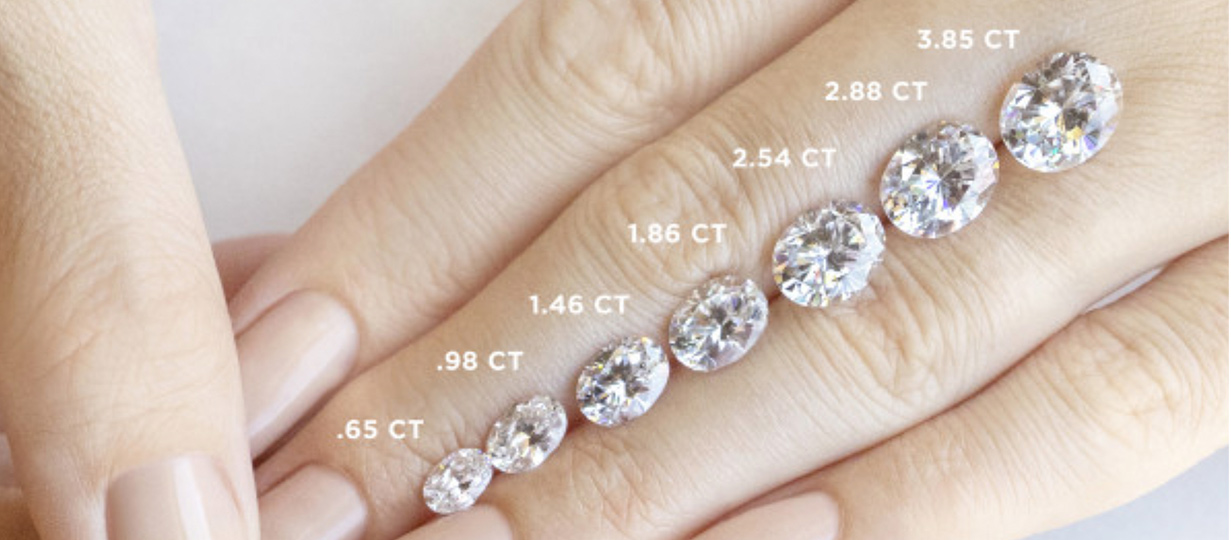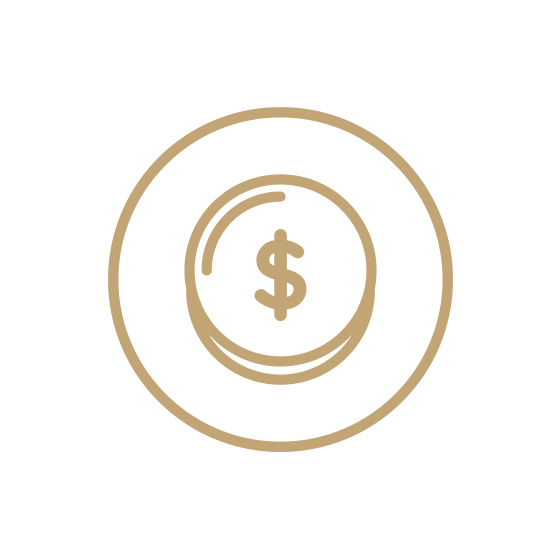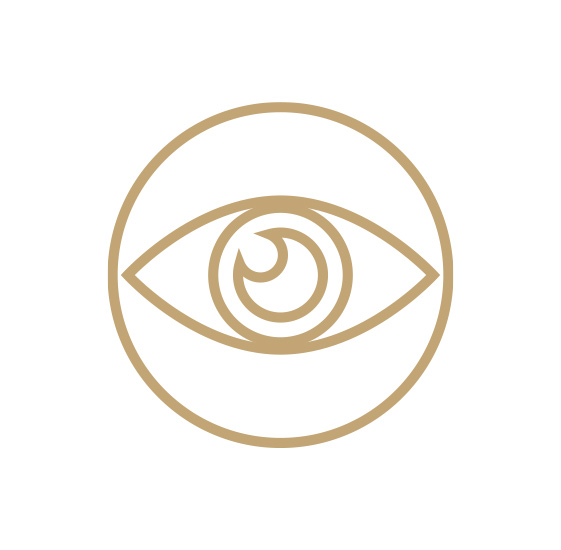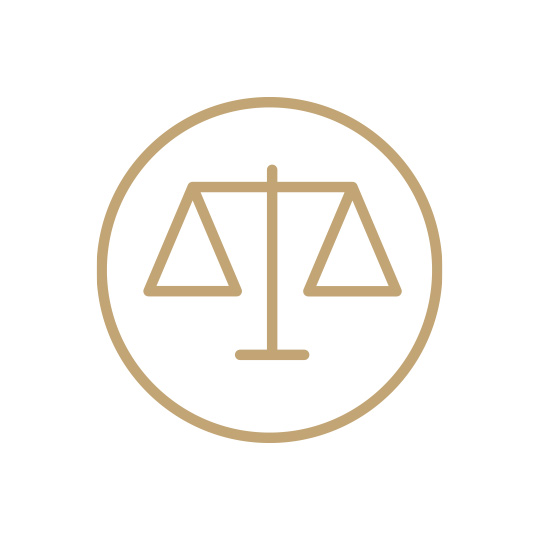Oval Diamond Size Chart: Your Ultimate Guide to Selecting the Ideal Stone
November 22nd, 2023 / Alese Oldenburg

An oval engagement ring is a beautiful thing in any size, but when shopping for any diamond for your engagement ring, it’s important to know what carat weight or size you are looking for and how the diamond’s carat size will affect how it appears, and how much it costs.
We have put together a guide to oval diamond sizes to help you understand why diamond size matters and how it relates to oval-shaped diamonds, in particular. You will be able to compare oval diamond sizes with this helpful oval diamond size chart and determine which option is right for you, your budget, and your oval diamond engagement ring.
The Oval-Shaped Diamonds
Oval-shaped diamonds, with their elongated silhouette and graceful curves, have captivated the hearts of jewelry aficionados for centuries. Their elegant form, reminiscent of a gently flowing river or a perfectly poised swan, exudes an air of sophistication and timeless beauty.
The oval diamond’s brilliance stems from its 58 facets, which meticulously reflect light, creating a mesmerizing spectacle of sparkle and fire. This radiant display is further enhanced by the oval shape’s ability to elongate the fingers, making them appear slender and delicate.
Oval diamonds are not only aesthetically pleasing but also practical. Their smooth, rounded edges make them less susceptible to chipping or cracking, ensuring that their brilliance remains undiminished over time. Additionally, oval diamonds often appear larger than their round counterparts of the same carat weight, making them a cost-effective choice for those seeking a generous-looking diamond.
Oval Diamond Size Chart
This oval diamond size chart will help you better understand the different oval diamond sizes and how they compare to one another.
It’s important to note that a diamond’s carat weight is not necessarily a true depiction of the size it appears. The face-up size, or the size you see when looking down on a diamond set in a piece of diamond jewelry, is also influenced by the diamond’s shape and cut quality.

If you’d like to compare other diamond shapes to oval diamonds and how their carat weight influences their face-up size, check out this diamond carat size chart. Here you can see the difference in size between an oval and a round brilliant cut diamond, a princess cut diamond, a cushion cut diamond, and even an Asscher cut diamond.
You may notice that even when the carat weight of an oval diamond doubles, the face-up size does not. This is because the carat weight takes into account the entire diamond, including its depth, which you can only see when you view a diamond from the side. Some diamond shapes tend to carry more of their weight in their table (the face-up part of the diamond) relative to other diamond shapes. The oval is one of these shapes. Due to its elongated shape, it often appears larger than a round brilliant diamond of the same carat weight.
If you are considering a round diamond as well, read our oval vs. round diamond guide to learn more about how these two popular shapes compare.
Best Carat Size for Oval Diamond
Diamond size isn’t the only factor to consider when shopping for a diamond with an oval shape for an engagement ring. In fact, it’s not even the most important. The best carat size for an oval diamond is dependent on the quality of the oval cut, as well as the clarity and color of the diamond. Keep these factors in mind to ensure you find the best oval diamond, regardless of size.
Other Factors to Consider
Cut
quality is extremely important when selecting a diamond for an engagement ring. The cut is what determines the sparkle and symmetry of the diamond, which contributes significantly to its appearance. A 1 carat diamond with an excellent cut may appear larger than a 1.3 carat diamond with a Good cut.

When it comes to oval diamonds, a poor cut can cause a bow-tie effect. This is when a dark shadow in the shape of a bow tie appears across the width of the diamond, diminishing its sparkle and brilliance. The oval diamond bowtie can be avoided by prioritizing ideal and excellent cut diamonds and carefully examining the diamond in different lights and from different angles to ensure it is bow-tie-free.
Proportion is also affected by cuts and is important to consider with an oval-shaped diamond. All ovals will have an elongated shape, but some will look more oblong while others will look more round, depending on their length-to-width ratios. Look for a length-to-width ratio of 1.25 to 1 – 1.65 to 1. The smaller the length-to-width ratio, the rounder the diamond will look. Too small, the oval diamond won’t appear oval at all, too long, the oval will become awkward in shape.
Color
Don’t overlook color when shopping for an oval diamond, either, especially when considering diamonds with large carat weights. The larger the carat weight, the more visible any color the diamond will be. Typically, a color grade of I or better is sufficient for an oval cut diamond ring, however, how much color is noticeable will vary depending on the carat weight and on the color metal of the setting as well. For white gold or platinum settings, a higher color grade will ensure the diamond looks white, not yellow, next to the metal. For rose gold or yellow gold settings, a lower color grade oval will still appear white against the precious metal.

Clarity
While carat weight may be the most important factor for you personally, don’t sacrifice clarity to get it. Similar to color, imperfections will be more visible in diamonds of larger carat weights. With oval diamonds, thankfully, imperfections are well hidden. So where you may need to seek out a high clarity grade for an emerald diamond, you can settle for a lower clarity grade for an oval diamond of the same carat weight.

Typically, an SI or SI2 clarity grade is sufficient for an oval diamond engagement ring, however, you may want to go up a grade or two when looking at large oval diamonds. Regardless of clarity grade, ensure your oval is “eye clean” when you look at it and beautiful to you.
Setting
When exploring oval engagement ring settings, keep in mind this aspect plays an important role in the overall look and feel of a diamond engagement ring and, thus, in selecting the best carat size. For instance, a halo setting will make the center stone appear larger than its actual size and enhance its sparkle. A halo setting is also very beautiful when paired with an oval diamond because it can give a smaller size oval a more dramatic look. The same can be said for the wedding bands you choose. Pave bands that surround an oval engagement ring will also enhance its sparkle.

If you have your heart set on a solitaire setting, without a halo or pave band, you may want to emphasize carat weight and cut to maximize sparkle and impact.
Physical Size
As we mentioned above, physical size and carat weight are not the same things. While carat weight may be easier to find when shopping for diamonds online, the millimeter measurements will also be listed for all diamonds rated by the Gemological Institute of America (GIA). Instead of getting hung up on the carat weight, pay attention to the millimeter size (mm size) of similar carat weights to see which diamonds have a larger face-up size relative to their weight.

Choosing the Right Carat Size
As you can see, there is much more to choosing the right diamond than just the carat size. When you take all of these elements into consideration, though, you will be in a better position to make a great decision. There’s no right carat size for everyone though. Before you shop, determine your budget, style, and priorities and you will be able to choose the right oval-size diamond for you.

Determine Your Budget
of the 4 Cs of diamond quality contribute to its cost but diamond carat size may do so the most. While variations in color and clarity from one level to the next have a slight impact on price, variations in carat size from one level to the next have a significant impact on price. Consider doubling your budget every time you step up in carat size i.e. from 1 to 2 carats or 2 to 3 carats.
For this reason, it’s important to determine your budget before you begin diamond shopping as it will greatly impact what carat size is right for you.

Look at Your Hands
Everyone’s hands and fingers are unique. Different diamond shapes and sizes will appear different for everyone. If you have small hands, a diamond with a large carat weight could overwhelm them, while those with longer fingers may feel underwhelmed by smaller carat weights. Oval diamonds are an excellent option for anyone because their oblong shape elongates the finger and takes up more space.

Set Your Priorities
As we mentioned above, clarity, color, and cut are all just as important to consider as carat size when shopping for an oval diamond, but deciding which qualities you want to prioritize for your budget is entirely up to you.
You don’t have to sacrifice quality in other areas to get the carat weight you want, though. As you set out on your search, explore our Nexus Diamond™ alternative collection of engagement rings created with care in our exquisite simulant diamond shop.
The Nexus Diamond™ alternative simulates the look, weight, and wear of a perfectly mined diamond and is guaranteed to never chip, scratch or discolor. When you shop the Nexus Diamond™ alternative, every oval stone is flawless, colorless, and ideal cut. You don’t have to sacrifice your budget, either. Our stones are affordable. In fact, they cost up to 80% less than mined diamonds.
Browse our selection of engagement rings to play around with different stones, settings, and carat sizes to discover which one is right for you.
sources
https://www.diamondnexus.com/blog/the-diamond-size-chart/
https://www.diamondnexus.com/blog/what-is-the-oval-diamond-bowtie-effect/
https://www.diamonds.pro/education/oval-cut/
*Here at Diamond Nexus, we strive to provide valuable information while being clear and honest about our products. The Nexus Diamond™ alternative is a patented lab created diamond simulate that, among all simulants, most closely imitates the look, weight and wear of a diamond, with two exceptions – it is absolutely perfect in every way, and it costs significantly less. Price points and environmental facts expressed in this blog were taken from popular online retailers and may vary. Learn more about the environmental impact of mining by visiting our blog.

